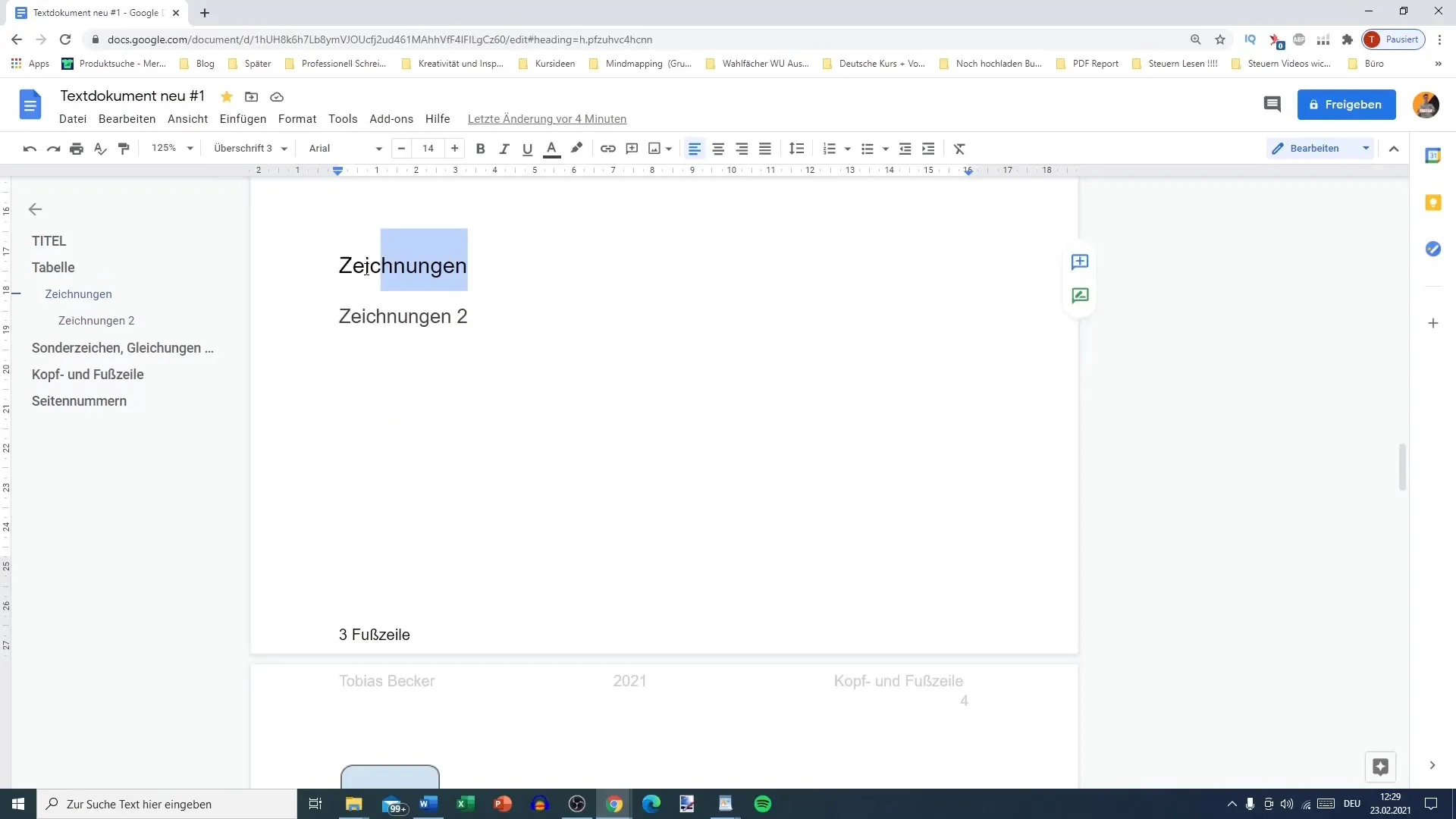Creating a table of contents in Google Docs can greatly facilitate navigation through your documents and ensure a professional presentation of your work. In this guide, I will show you step by step how to create a table of contents in Google Docs, whether with page numbers or clickable links. I will also focus on important details so that you can effectively structure your documents.
Main Insights
- Table of contents help increase the clarity of your documents.
- There are two types of table of contents: with page numbers and with clickable links.
- The update function ensures that your table of contents is always up to date.
- You can add additional links and information to the table of contents, but make sure not to disrupt the format.
Step-by-Step Guide
First, make sure that your headings in the document are formatted correctly. Google Docs uses different heading levels (Heading 1 for main chapters, Heading 2 for subchapters, etc.) which are crucial for the table of contents.

First, insert a table of contents into your document. To do this, simply navigate to the "Insert" menu in the top bar. Scroll down until you find the "Table of contents" option.
A menu will appear with two variations for the table of contents: one with page numbers and one without page numbers, but with clickable links. Let's first select the one with page numbers.
After inserting it, you will see that the table of contents is automatically generated from your formatted headings. The main headings are left-aligned and indented, while the page numbers are displayed on the right.
The table of contents is not static; it will automatically update with any adjustments to your headings or text. To check this, go to "Update Table of Contents". You should then see that changes in your document structure are reflected here.
Now let's look at the second version, which does not include page numbers but instead offers clickable links. This is particularly useful for digital documents like e-books, where fixed page numbers do not exist.
To create the clickable table of contents, follow the same steps as before, but choose the version without page numbers when selecting the table of contents. You will see a similar structure, but without the page numbers.
The clickable links will take you directly to the corresponding part of the document, which is particularly beneficial when reading e-books or online documents. Test this by clicking on the links in the table of contents.
You can also add links to external resources or additional information. To do this, click on the part in the table of contents where you want to add a link and select "Insert Link".

Make sure that additional links are only added as long as you do not subsequently update the structure of the table of contents. Otherwise, these changes may be lost. If you no longer need these links, you can also remove them.
If you are working on a scholarly paper and want to make specific adjustments to the table of contents, be careful with the update function. Make sure that all manually added elements are retained before updating.
Summary
Creating a table of contents can improve both reader guidance and the clarity of your document. With the various options for designing a table of contents in Google Docs, you can ensure that you find the right solution for your specific needs.
Frequently Asked Questions
How do I insert a table of contents in Google Docs?Go to "Insert", then "Table of contents" and choose the desired variation.
Can I insert links to external sites in my table of contents?Yes, you can add links as long as you do not update them subsequently.
What happens when I update my table of contents?Changes to page numbers or added links may be lost when updating.
How can I ensure that my headings are correctly formatted?Use the appropriate settings for "Heading 1", "Heading 2", etc. in the formatting menu.


